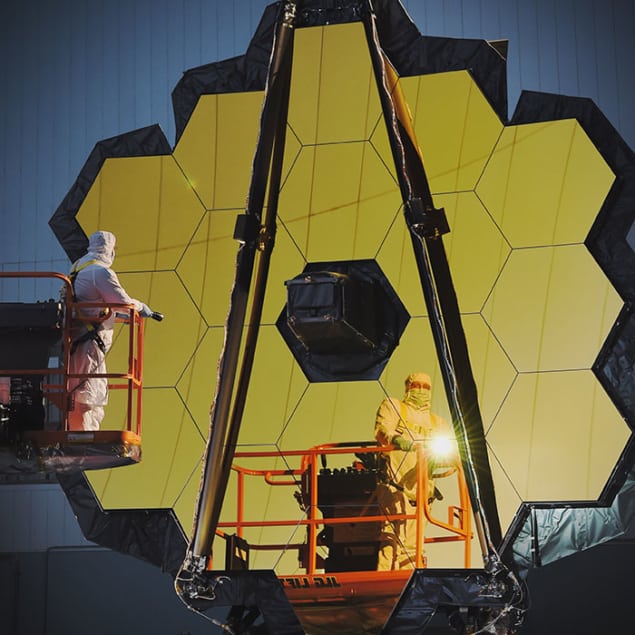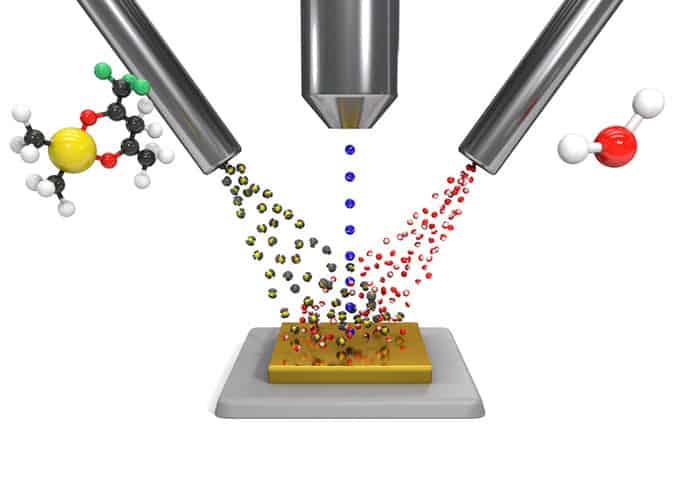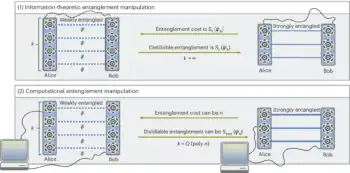Flash Physics is our daily pick of the latest need-to-know developments from the global physics community selected by Physics World‘s team of editors and reporters

Space telescope passes mirror milestone
The giant mirror at the heart of the James Webb Space Telescope (JWST) has been subjected to the first of many rigorous tests before the mission launches in 2018. The mirror is 6.5 m in diameter and has passed a “centre-of curvature test” of its optical properties at NASA’s Goddard Space Flight Center in Greenbelt, Maryland. The tests were done using interferometry to look for tiny imperfections in the shape of the mirror. The mirror will now undergo a large number of mechanical tests that will see it subjected to violent vibrations similar to those it will experience during launch. Then a second centre-of-curvature test will be done. “This is the only test of the entire mirror where we can use the same equipment during a before-and-after test,” explains NASA’s Ritva Keski-Kuha, adding: “This test will show if there are any changes or damages to the optical system.”
Quantum keys distributed over 404 km fibre
A new distance record of 404 km for quantum-key distribution (QKD) on an optical fibre has been achieved by Jian-Wei Pan of the University of Science and Technology of China and colleagues at a number of Chinese universities and research labs. QKD involves two agents – Alice and Bob – exchanging a cryptography key that must be kept secret from an eavesdropper, Eve. This is done by using a quantum-information protocol, which reveals whether Eve has measured information exchanged by Alice and Bob. The team implemented a version of QKD called measurement-device-independent quantum-key distribution (MDIQKD), which was first proposed in 2012 and involves sending out decoy pulses to stop Eve from using loopholes in the original QKD formulation. MDIQKD was performed by encoding quantum information in infrared photos and sending them over 404 km of ultra-low-loss optical fibre. The protocol was also implemented over 311 km of standard optical fibre. As well as doubling the previous record of 200 km, Pan and colleagues were also able to increase the speed of running MDIQKD by a factor of 200 – something that is important for practical implementations of quantum cryptography. The research is described in Physical Review Letters.
Gold 3D nanostructures made using new technique

Tiny 3D gold structures just a few hundred nanometres in size have been created by using a new technique developed by researchers at the Vienna University of Technology in Austria. Gold nanostructures have unique optical and electronic properties that make them potentially useful for a range of applications from biological sensing to optoelectronics. However, existing techniques for creating the 3D nanostructures are expensive and time consuming. Now, Heinz Wanzenböck and colleagues have used a technique called focused-electron-beam-induced deposition (FEBID) to create 3D nanostructures on a germanium substrate. This involves firing an electron beam and two molecular beams at the substrate. One molecular beam is an organic compound containing gold and the other is simply water. Energy from the electron beam liberates the gold from the organic molecules and the water enhances oxidation, which improves the quality of the 3D gold nanostructures. Whereas previous deposition methods created 3D structures that only contained 30% gold atoms (and 70% carbon), this latest technique achieved 91% gold. The method is described in Scientific Reports.
- You can find all our daily Flash Physics posts in the website’s news section, as well as on Twitter and Facebook using #FlashPhysics. Tune in to physicsworld.com later today to read today’s extensive news story on funding problems in Brazil.



